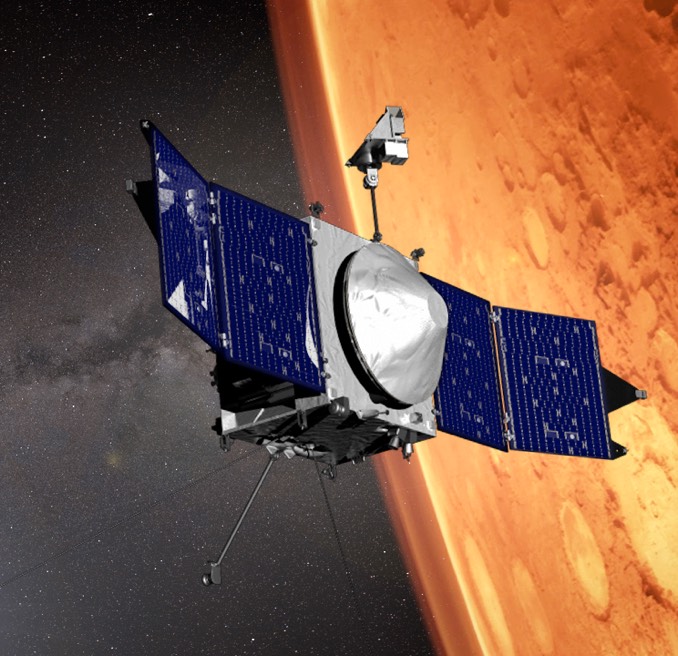
NASA’s long-lived Opportunity Mars rover may have given up the ghost, but the nuclear-powered Curiosity rover is still plugging away and NASA is pressing ahead with plans to launch a twin rover, with a different suite of instruments, in 2020.
To help bring data down from the Mars 2020 rover, NASA’s MAVEN satellite is repeatedly dipping into the red planet’s upper atmosphere, using a technique known as aerobraking to lower the high-side of its elliptical orbit without consuming precious propellant.
Going into the aerobraking campaign, MAVEN’s orbit had a high point of 6,200 kilometres, a low-point of 150 kilometres (3,850 miles by 78 miles) and an orbital period of 4.5 hours. When the orbital adjustment is complete in May, the low point will remain the same but the high point will be reduced to about 4,500 kilometres (2,800 miles), resulting in a 3.5-hour period.
“The MAVEN spacecraft has done a phenomenal job teaching us how Mars lost its atmosphere and providing other important scientific insights on the evolution of the Martian climate,” Jim Watzin, director of NASA’s Mars Exploration Program, said in a NASA statement. “Now we’re recruiting it to help NASA communicate with our forthcoming Mars rover and its successors.”

The new orbit will permit more frequent and efficient data relay from NASA’s 2020 Mars rover, allowing the satellite to complete 6.8 orbits per Earth day instead of 5.3.
“It’s like using your cell phone,” said Bruce Jakosky, MAVEN principal investigator. “The closer you are to a cell tower, the stronger the signal.”
Equipped with instruments to study the martian atmosphere, MAVEN was launched in 2013 and arrived at Mars in September 2014. It was designed for a two-year mission, but the spacecraft remains in good health and has enough propellant left to operate for another 10 years. It is equipped with an ultra-high-frequency radio that allows it to relay data from rovers or landers back to Earth.
While the new orbit will facilitate data relay operations, Jakosky said MAVEN will continue studying the structure and composition of the upper atmosphere.
“We’re planning a vigorous science mission far into the future,” he said.



